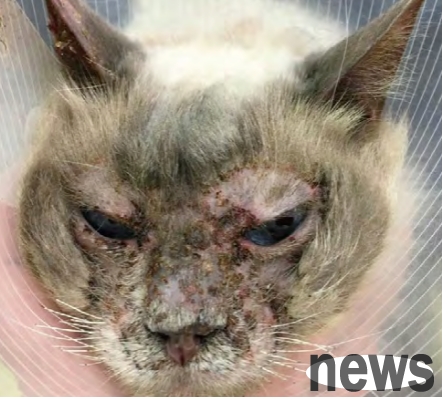. For animals living in the Mediterranean region or traveling there frequently, there is also a specially developed package that considers the special Mediterranean flora. If allergic to Malassezia is suspected, Malassezia IgE can also be detected. F...
Rare causes of pruritus self-damaging hair loss are hyperthyroidism and cutaneous lymphoma. For this reason, total thyroxine levels in the serum should be measured in elderly cats showing other clinical symptoms of increased thyroxine before allergic testing is performed. For cases of suspected skin lymphoma, cytology provides clues for skin lymphoma, which requires a biopsy to confirm.
Compared with pruritus self-damaging hair loss, non-pruritus self-damaging hair loss is much lower. It may be caused by a "mental illness", pain, or neurological disorder/perception. Psychogenic hair loss is caused by stressors such as relocation, loss of companion animals or caregivers, new family members, and pain and sensory abnormalities are the result of trauma, musculoskeletal system disease or neuropathy. A suspected diagnosis can be made when the animal's strong desire to comb hair does not respond to anti-itchi treatment. However, all causes of itchy hair loss must be ruled out in advance. In a study of 21 cats diagnosed with psychogenic hair loss, only 2 of these animals were due to pure behavioral problems. Other animals have at least one other disease, such as food allergies and atopic dermatitis, which explains frequent hair combing behaviors (Waisglass et al., 2006).

Spontaneous hair loss is rare compared to self-damaging hair loss. The diagnostic clue of spontaneous hair loss is that hair on the edge of the disease is easy to pull out. First, it is necessary to clarify whether the hair removal site may be scars (such as trauma, repeated injection of glucocorticoids). A relatively common cause is folliculitis, which may be the result of infection (e.g., Demodendron, Dermatophyte, Staphylococcus) or an immune-mediated disease (e.g., pemphigus, Figure 5). Hair follicles are damaged due to inflammation and hair falls out. After great mental or physical stress, large amounts of hair loss during the growth period (after a few days) or at the end period (after one to three months) can cause diffuse, non-inflammatory shedding. Especially in older animals, hair loss may occur during tumor diseases (hepatocholangiocarcinoma, pancreatic cancer), which is mainly manifested as complete hairlessness in the abdomen and waxy skin. Often, these animals also show systemic clinical symptoms. Diagnosis is confirmed using imaging techniques and histological examination of the tumor. Alopecia areata is a very rare form of hair removal in cats. It is diagnosed through pathological histological examination due to hair loss caused by autoimmune destruction of hair follicles. Cat Kuxing syndrome is also a very rare disease. In addition to hair loss and thin and fragile skin, sick animals usually exhibit erect/polyury, edible, pear-shaped abdomen and in about 80% of cases suffer from uncontrollable diabetes. Diagnosis was performed by the corresponding functional test of the serum (dexamethasone inhibition test).